Agra, located on the banks of the Yamuna River in Uttar Pradesh, is one of India’s most iconic travel destinations. Famous for the Taj Mahal, this city holds centuries of Mughal history, breathtaking architecture, and vibrant culture.
Agra, located on the banks of the Yamuna River in Uttar Pradesh, is one of India’s most iconic travel destinations. Famous for the Taj Mahal, this city holds centuries of Mughal history, breathtaking architecture, and vibrant culture.

Explore Agra, the city of the iconic Taj Mahal, is one of India’s most visited destinations. Located in Uttar Pradesh along the Yamuna River, Agra is rich in Mughal history, architectural marvels, and vibrant culture. From magnificent forts to bustling local markets, Agra offers travelers a perfect blend of history, art, and cuisine.
Whether it’s your first visit or a return trip, this Travel Guide to Agra will help you explore Agra and uncover the best sights, experiences, and hidden gems of this historic city.
Best Time to Explore Agra
| Season | Months | Weather | Best For | Highlights | Notes / Ideal For |
|---|---|---|---|---|---|
| 🌸 Winter | October – March | Cool, 8°C to 25°C | Sightseeing, photography, cultural tours | Taj Mahal, Agra Fort, Fatehpur Sikri | Best time for sightseeing and outdoor exploration |
| ☀ Summer | April – June | Hot, 30°C to 45°C | Indoor sightseeing, short visits | Taj Mahal early morning visit | Avoid mid-day heat; early morning recommended |
| 🌧 Monsoon | July – September | Rainy, 25°C to 35°C | Peaceful travel, fewer tourists | Gardens, local markets | Humidity may be high; carry umbrellas |
✅ Best Overall Time: October to March
🌄 For Sunrise at Taj Mahal: Early mornings during winter months
Pro Tip: Book Taj Mahal tickets in advance and visit at sunrise for a magical experience.
places to explore in agra
Explore Agra
Agra is a city on the banks of the Yamuna river in the Indian state of Uttar Pradesh, about 230 kilometres south-east of the national capital Delhi and 330 km west of the state capital Lucknow. It is also the part of Braj region
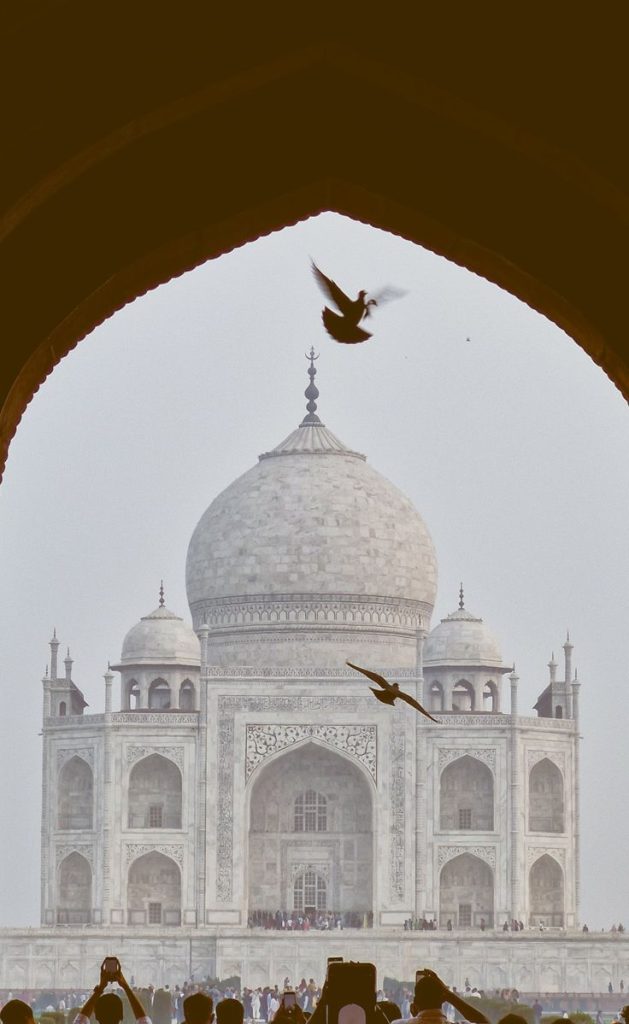
A Glimpse in Explore Agra of Agra’s History
Once the capital of the Mughal Empire. Flourished under rulers like Akbar, Jahangir, and Shah Jahan. Known as the hub of art, architecture, and culture.
Agra’s history is defined by its time as the capital of the Mughal Empire, beginning with its establishment by Sultan Sikandar Lodi in 1504 Explore Agra
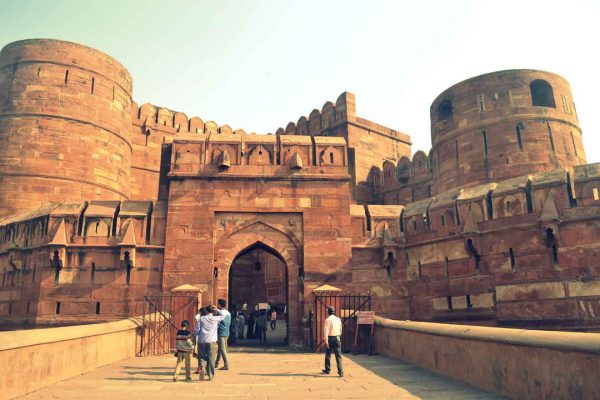
Under the Mughals, including Emperors Akbar, Jahangir, and Shah Jahan, the city reached its architectural peak, with iconic structures like the Agra Fort and the Taj Mahal Explore Agra, a testament to the era’s grandeur. Though the capital eventually shifted to Delhi, Agra remains a vital center of India’s medieval history and culture
The Crown Jewel: Taj Mahal
One of the Seven Wonders of the World. Built by Shah Jahan in memory of Mumtaz Mahal. Symbol of eternal love, constructed in pristine white marble. Best times to visit: sunrise and full moon nights.
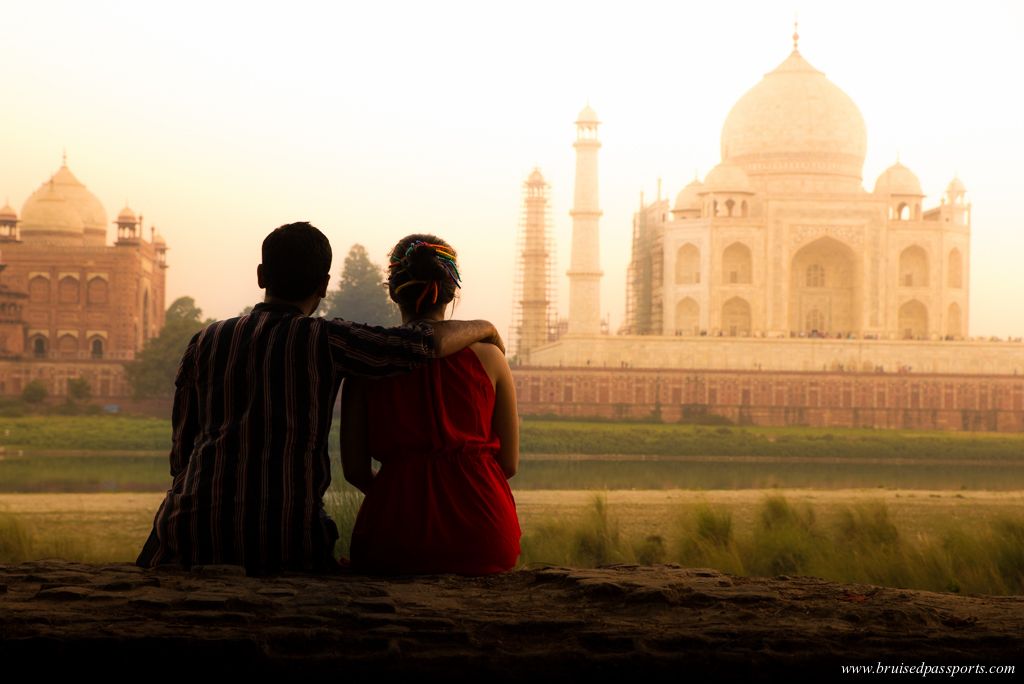
The Taj Mahal is a mausoleum in Agra, India, built by Mughal Emperor Shah Jahan in memory of his wife, Mumtaz Mahal. This iconic symbol of eternal love is a masterpiece of white marble architecture and is listed as one of the New Seven Wonders of the World. Explore Agra is It is particularly renowned for its beauty at sunrise and on full moon nights it a beatufull moments in the Explore Agra
Other Must-Visit Monuments in the Explore Agra
Explore Agra start from
Agra Fort
Built by Emperor Akbar, the red sandstone fort served as the Mughal imperial city and royal residence, showcasing exquisite architecture like the Jahangir Palace and Diwan-i-Khas, and offering scenic views of the nearby Taj Mahal also include its in the Explore Agra
Agra Fort is a massive 16th-century Mughal fortress in Agra, India, and a UNESCO World Heritage Site since 1983, recognized for its grand palaces, audience halls, and mosques
A designated UNESCO World Heritage Site, it was the main residence of the Mughal emperors until 1638, when the capital was shifted to Delhi. The fort offers striking views of the Taj Mahal, which sits just 2.5 kilometers away
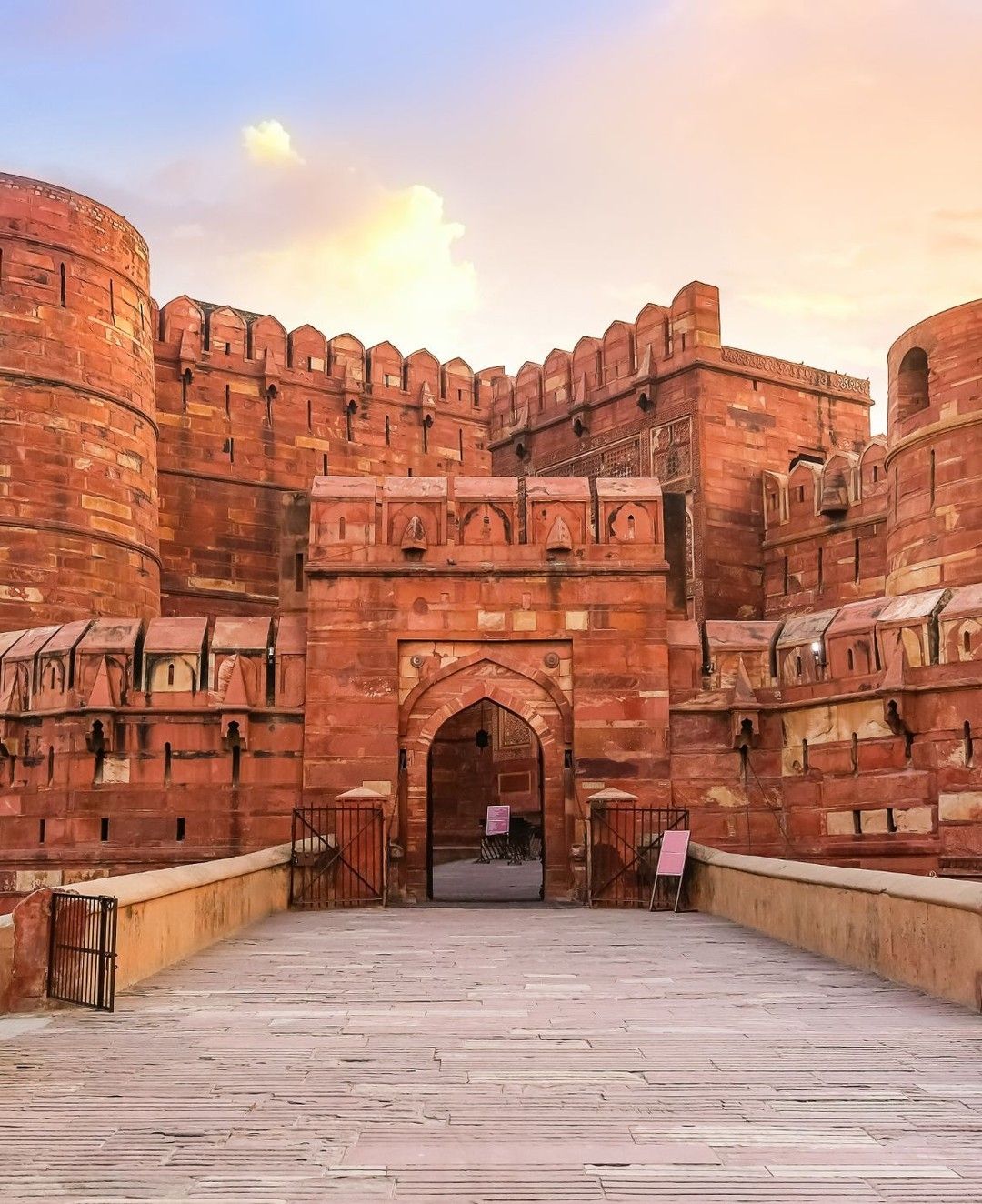
The entry to Agra Fort is allowed through the Amar Singh Gate only. Some portion of this fort is used by the Indian Army. The public access to that part has been prohibited. So you can not see that area.
2 Fatehpur Sikri
Fatehpur Sikri, a UNESCO World Heritage site, was a capital city of the Mughal Empire from 1571 to 1585, founded by Emperor Akbar. Though it experienced a relatively short period of prominence, it was abandoned due to water scarcity and proximity to rebellious Rajput territories, leaving behind intact palaces, mosques, and other structures that showcase exquisite Mughal architecture.
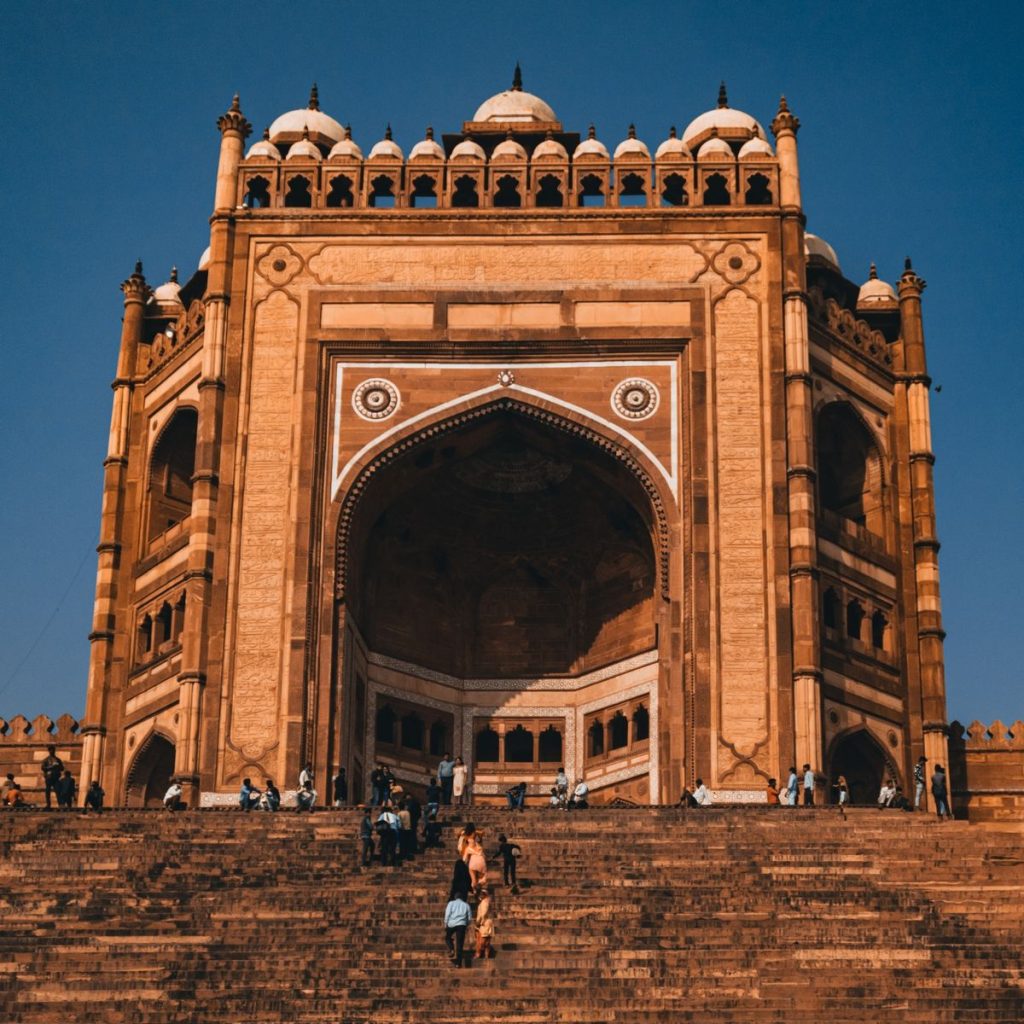
Historical Background
It remained the capital for just 14 years before being abandoned due to water scarcity and vulnerability to attacks from neighboring Rajput kingdoms.
Akbar built Fatehpur Sikri after the prophecy of Sufi saint Sheikh Salim Chishti, who predicted the birth of his heir, Jahangir.
The city was designed as a planned Mughal capital, blending Persian, Islamic, and Indian architectural styles.
Fatehpur Sikri is a historic city located about 40 km west of Agra, Uttar Pradesh. It was founded in 1571 by the Mughal Emperor Akbar and served as the capital of the Mughal Empire until 1585. Today, it is recognized as a UNESCO World Heritage Site and one of the finest examples of Mughal architecture in India.
3 Itmad-ud-Daulah’s Tomb
Often called the “Baby Taj.”
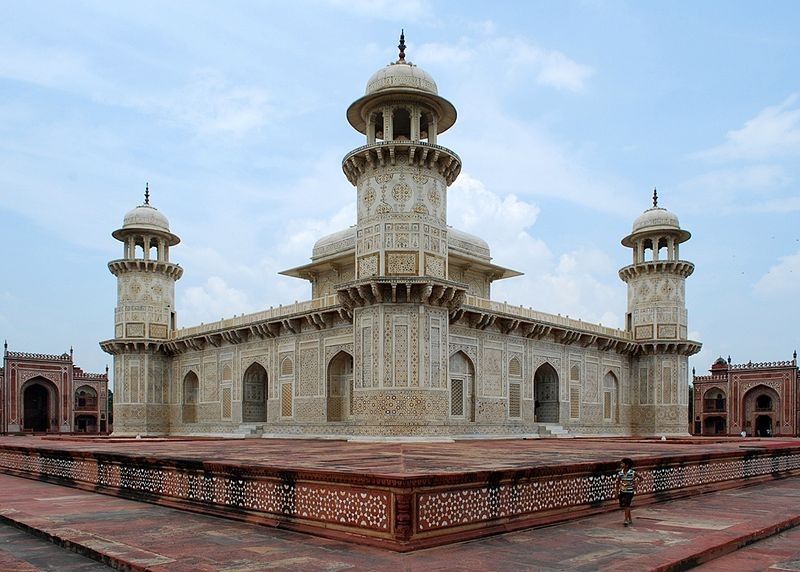
Itmad-ud-Daulah’s Tomb, located in Agra, is nicknamed the “Baby Taj” because it is a beautiful, white marble mausoleum built by Mughal Empress Nur Jahan for her parents, and it predates and influenced the construction of the Taj Mahal. Constructed between 1622 and 1628, this tomb is a masterpiece of white marble and delicate inlay work, making it a precursor to the Taj Mahal’s grandeur
Key Facts Itmad-ud-Daulah’s Tomb – Often called the “Baby Taj.”
- Location: The tomb is situated on the banks of the Yamuna River in Agra, India.
- Builder: It was commissioned by Nur Jahan, the mother of Mughal Emperor Shah Jahan.
- Purpose: The tomb houses the remains of Nur Jahan’s father, Mirza Ghiyas Beg (Itimad-ud-Daulah), and her mother, Asmat Begum.
- Significance: It marks a significant transition in Mughal architecture from red sandstone structures to the white marble that would later define the Taj Mahal.
Mehtab Bagh
Garden offering a stunning view of the Taj at sunset.
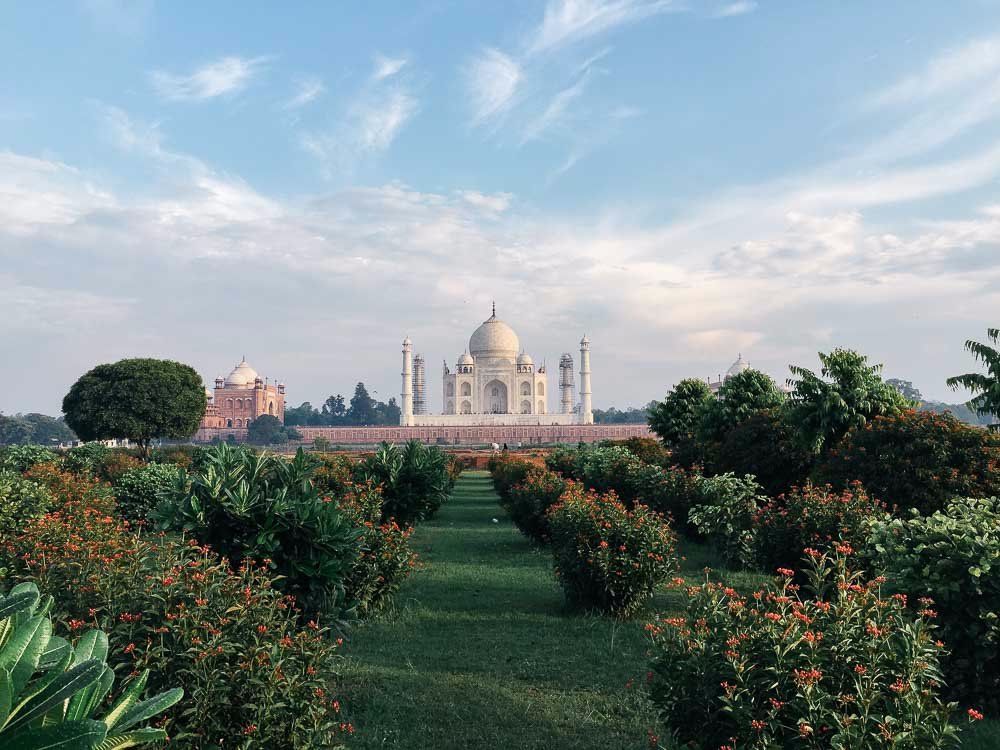
🌿 Historical Significance:
Built around 1631–1635 by the Mughal Emperor Shah Jahan, Mehtab Bagh was the last of the 11 Mughal gardens built along the Yamuna in Agra.
🌙 Design & Purpose:
It is laid out in the classical Persian charbagh style (four quadrants divided by walkways and water channels).
The garden was designed to align perfectly with the Taj Mahal, serving as a viewing point, especially under moonlight, when the reflection of the Taj could be seen shimmering in the Yamuna.
🕌 The Black Taj Myth:
Local legend says Shah Jahan intended to build a “Black Taj Mahal” (as his own mausoleum) opposite the Taj, in Mehtab Bagh. However, no evidence supports this — excavations revealed only garden structures and a large octagonal tank, not foundations for a mausoleum.
📸 Modern Attraction:
Today, it’s one of the best sunset viewpoints for the Taj Mahal, away from the crowds. Visitors often come here to enjoy serene views and photography
Discover Hidden Gems Around Agra
For offbeat experiences, in the Explore Agra
| Place | Distance / Location | What’s Special |
|---|---|---|
| Itmad-ud-Daulah | 6 km | Known as the “Baby Taj,” intricate marble work |
| Akbar’s Tomb | Sikandra, 13 km | Mausoleum of Emperor Akbar with beautiful gardens |
| Ram Bagh | City Center | Oldest Mughal garden in India; peaceful walks |
| Chini Ka Rauza | 7 km | Persian-style mausoleum with glazed tile work |
Cultural Experiences in Agra during Explore Agra is
Mughlai cuisine is a grand style of cooking, known for its opulent dishes featuring tender kebabs, flavorful biryanis, and rich, creamy gravies, all infused with aromatic spices, dry fruits, and ghee
Mughlai cuisine: kebabs, biryanis, and rich gravies. Street food delights: petha (sweet), bedai, and kachori.
Handicrafts: marble inlay work, leather goods, carpets.
Festivals: Taj Mahotsav showcasing local arts and crafts.

Travel Tips for Visitors
For a visit to Goa, pack light clothing, swimwear, sunscreen, and a hat to combat the heat and sun. Use local transport like buses and ferries for affordable travel. Try street food to experience local flavors and stay hydrated. Be aware that drinking alcohol in public is prohibited and littering is an offense. Plan your itinerary to cover attractions in either North or South Goa, as the regions are far apart
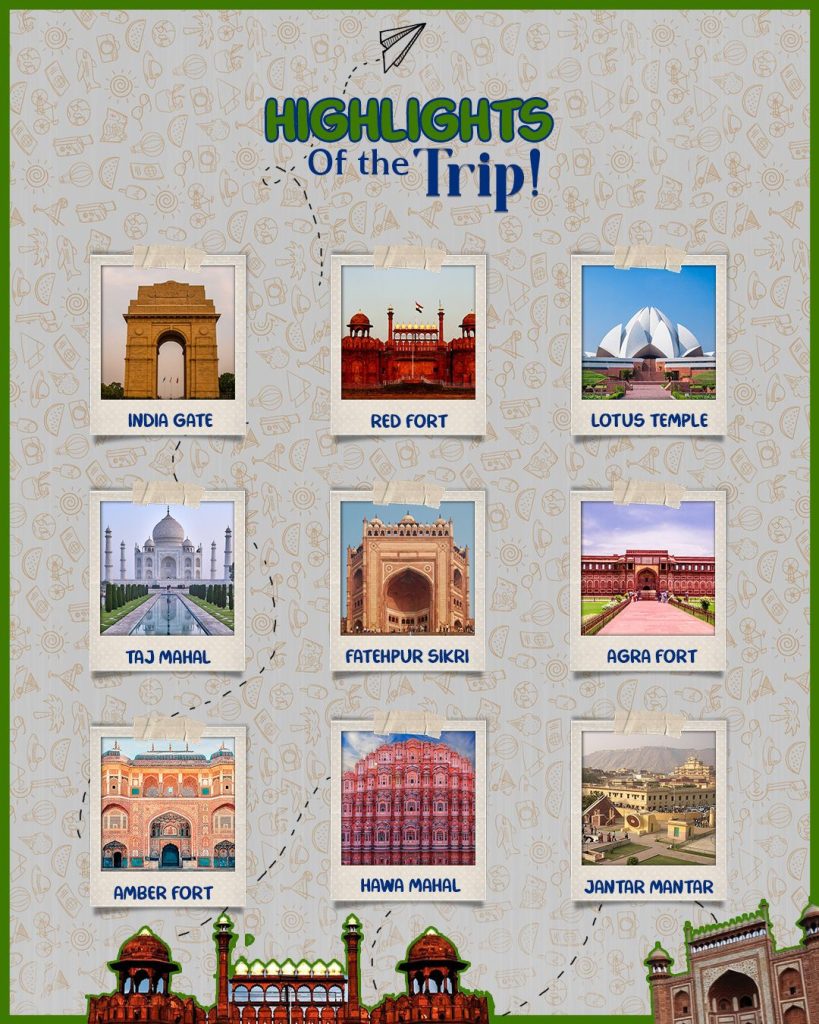
The best time to visit Goa is from November to February during the peak season, offering pleasant weather, vibrant festivals, and a lively atmosphere for beach activities and nightlife. For a quieter and budget-friendly trip, consider the shoulder season from October to March when the monsoon has receded, or the off-season from June to September during the heavy monsoon rains, which transforms Goa into a lush green paradise but comes with unpredictable rainfall and fewer crowds
Best time to visit: October to March. Stay options: luxury hotels with Taj views to budget stays.
Transportation: Accessible by road, rail, and air (via Delhi). Pro tip: Hire a local guide for deeper historical insights.
Conclusion For Goa
gra is not just about the Taj Mahal—it is a city where every monument whispers stories of grandeur, love, and legacy. Whether you are a history buff, a foodie, or a culture enthusiast, Agra promises an unforgettable journey into India’s glorious past